- 04 Jul 2025
- 6 Minutes to read
- Print
- DarkLight
Creating a Procedure
- Updated on 04 Jul 2025
- 6 Minutes to read
- Print
- DarkLight
This topic describes how to create a new Procedure and its specific properties.
A Board Procedure is a sequence of Actions (also called steps) organized into groups. The execution of a Procedure starts with the first step of the first group (usually called Main group) and ends after executing the last step of the first group.
The execution flow can jump to other groups, by invoking a specific "Go to group" step, or even jump to another Procedure with the "Call Procedure" step. This allows to better organize the Procedure logically and to reuse a common series of steps.
Create a new Procedure
When Creating a Procedure, there are two ways to do so:
Both use the same logic, however where to create them differs.
This topic specifically covers how to create a new Procedure from a Data model. However, if you want to create a new Procedure from a Capsule, you would follow the instructions below to get to the Capsule Procedure page and then follow the numbered steps that are described under the heading “Create a new Procedure from a Data model”.
Create a new Procedure from a Capsule
To create a new Procedure from a Capsule, enter a Capsule in Design mode, click on Procedures from the Resources tab in the left panel, and click on the black plus icon  in the top left corner next to "Procedures" to access the Procedure configuration panel.
in the top left corner next to "Procedures" to access the Procedure configuration panel.
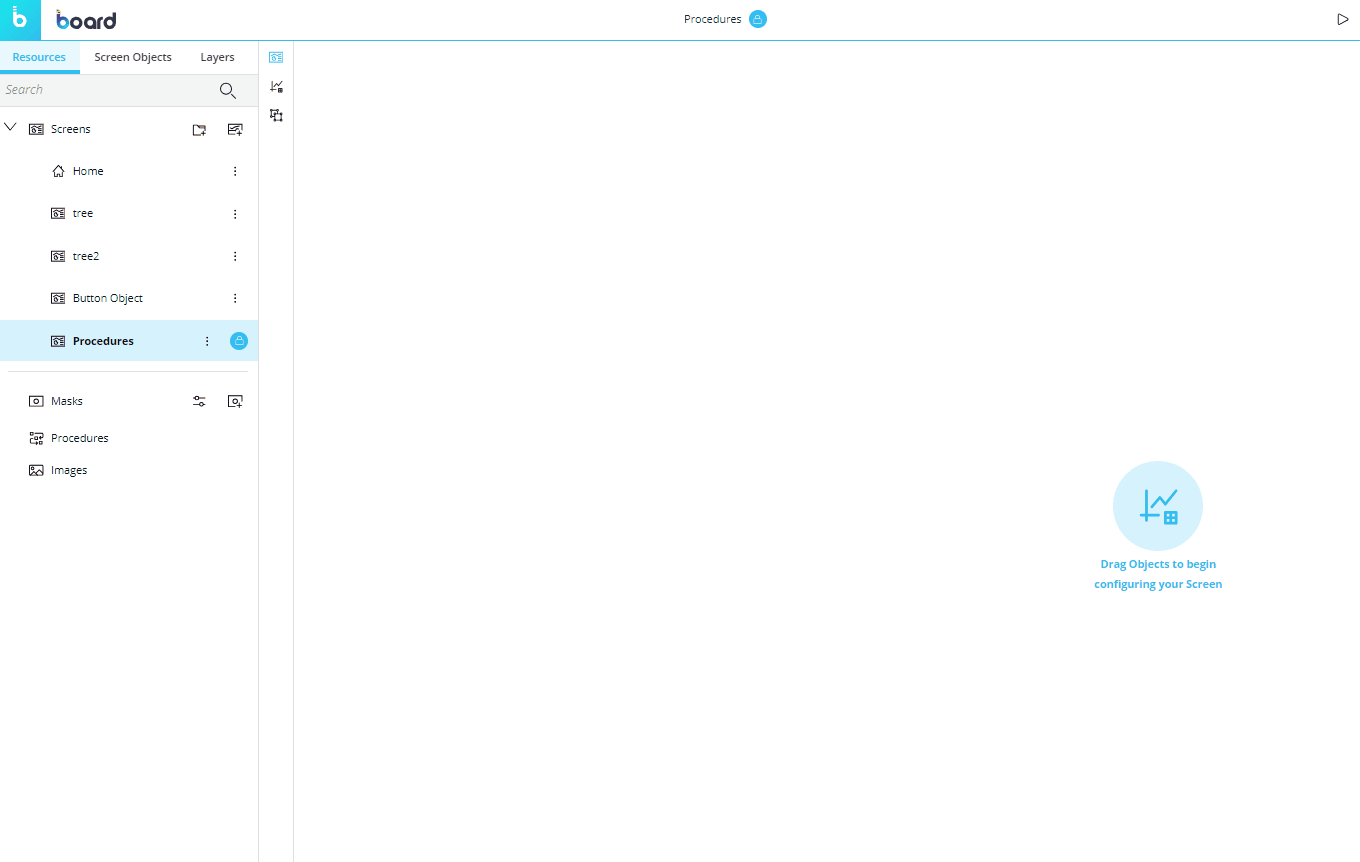
Create a new Procedure from a Data model
To create a new Procedure from a Data model, enter a Data model, click on Procedures, and click on the orange plus icon  in the top left corner next to "Procedures" to access the Procedure configuration panel.
in the top left corner next to "Procedures" to access the Procedure configuration panel.
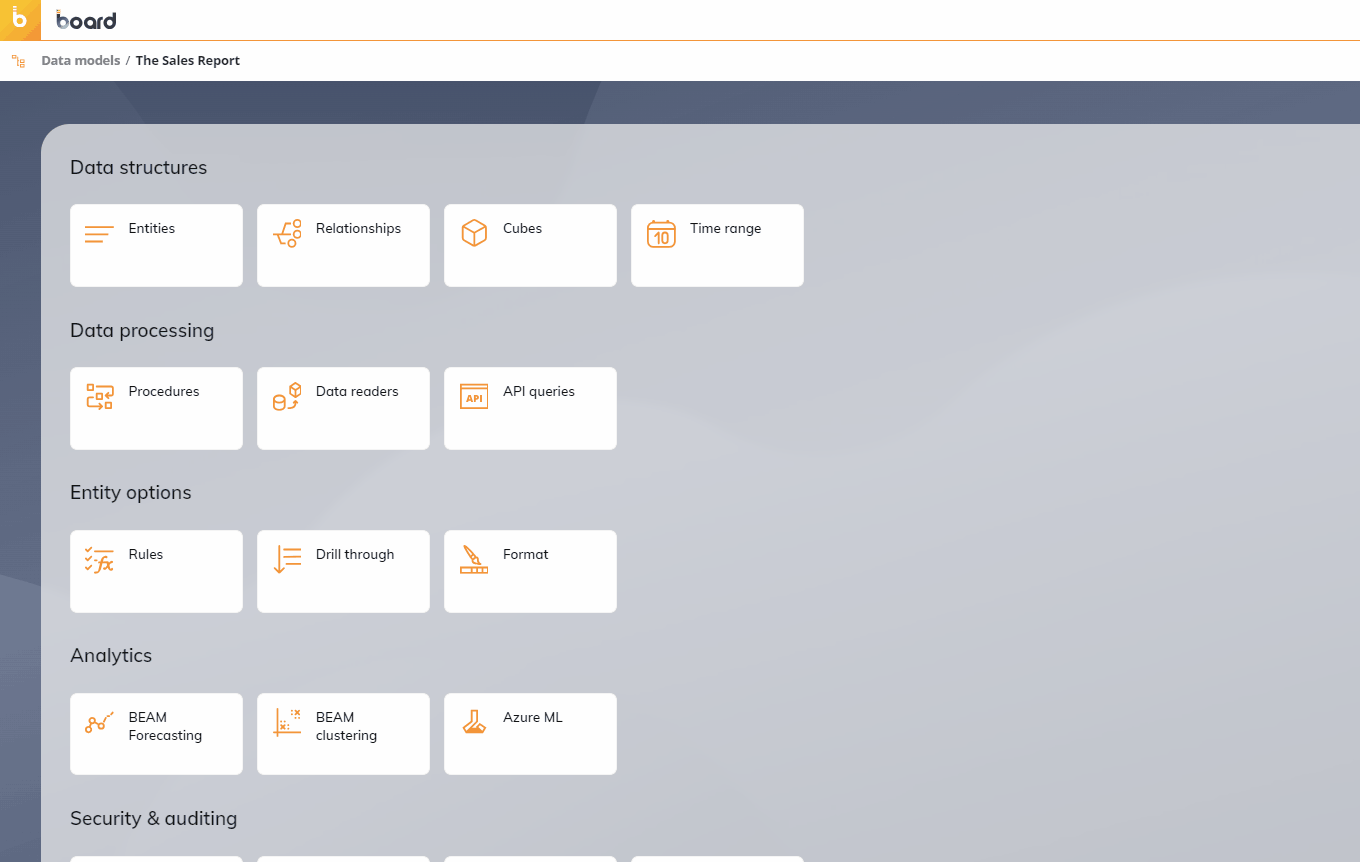
Once the configuration panel is displayed, proceed as follows:
In the "Configuration" tab, enter the Procedure name.
Select the notification execution style from the 3 available options:
Show a window. The Procedure execution will be notified with a window, this window will close as soon as the Procedure ends or if the user decides to close the window.
Freeze Screen. The user cannot click on any part of the Screen until the Procedure ends. This is the default.
Background execution. The Procedure will execute in background, the user can navigate the application without waiting for the end of the Procedure.
Add Procedure steps by clicking the "+ STEPS" button. Once the Procedure editor is open, add as many steps and groups by using the "+STEP" and "+ CREATE GROUP" buttons respectively. You can also add a new step by placing the mouse pointer after the desired step and clicking on the "+" icon.
Move Steps
To move a step or a group, use the drag indicator icon
 to move it to the desired position.
to move it to the desired position.
Copy/Paste Steps
To copy/paste multiple steps and groups from within the Procedure editor, select the desired steps or groups and click the "COPY STEPS" or "COPY GROUPS" buttons on top of the page.
Once the steps or groups are copied, the "PASTE STEPS" and/or "PASTE GROUPS" buttons will appear.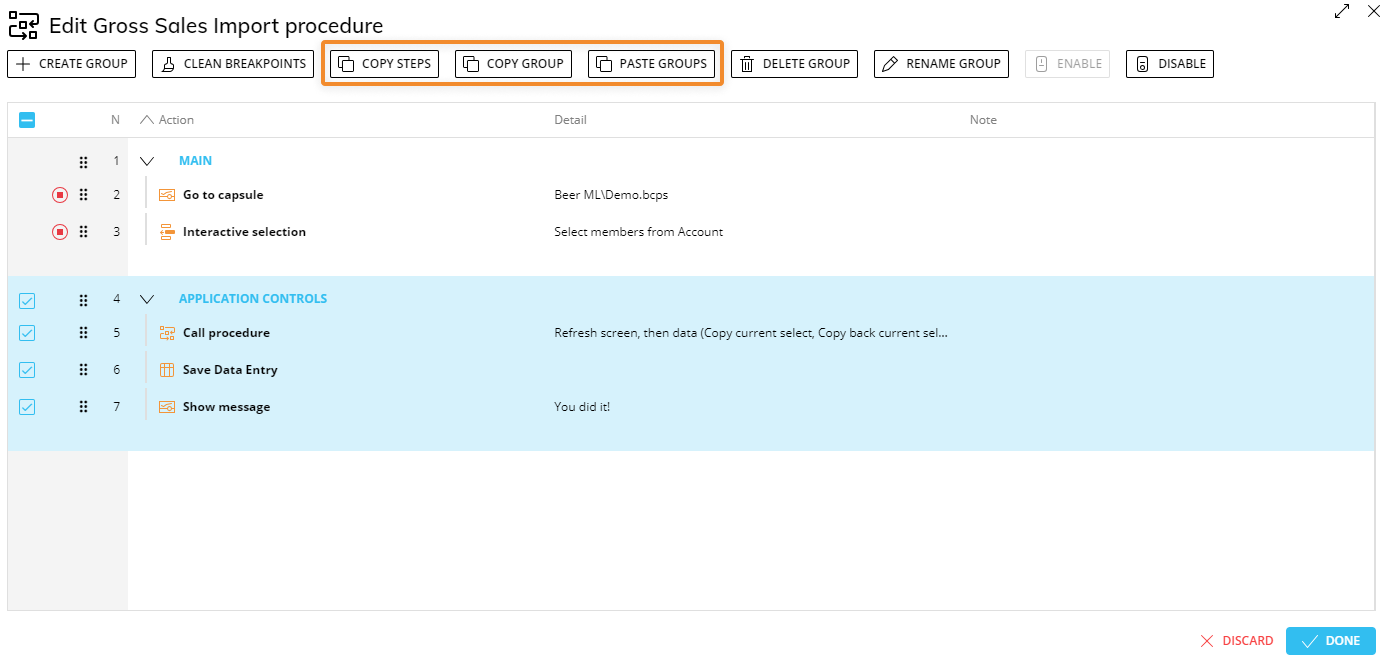
You can also copy and paste steps or groups using the Ctrl+C and Ctrl+V keyboard shortcuts.
At this point you have 2 pasting options:
To paste one or more steps, select an existing step after which you want to paste the steps you copied and click the "PASTE STEPS" button. The copied steps will be pasted below the target step (i.e. the step selected at that time).
To paste one or more groups, click the "PASTE GROUPS" button. This action will always paste the copied groups to the end of the Procedure, regardless of the step or group selected at that time.
You can paste steps and groups within the same Procedure or in another one, provided they are all saved in the same Data model.
In the Procedure editor, you can also enter comments for each step: to do so, click in the Note field to the right of the Detail field and enter the desired comment.
The comment will display in the Procedure editor as well as in the Properties panel that appears when the Procedure is selected in the home page.
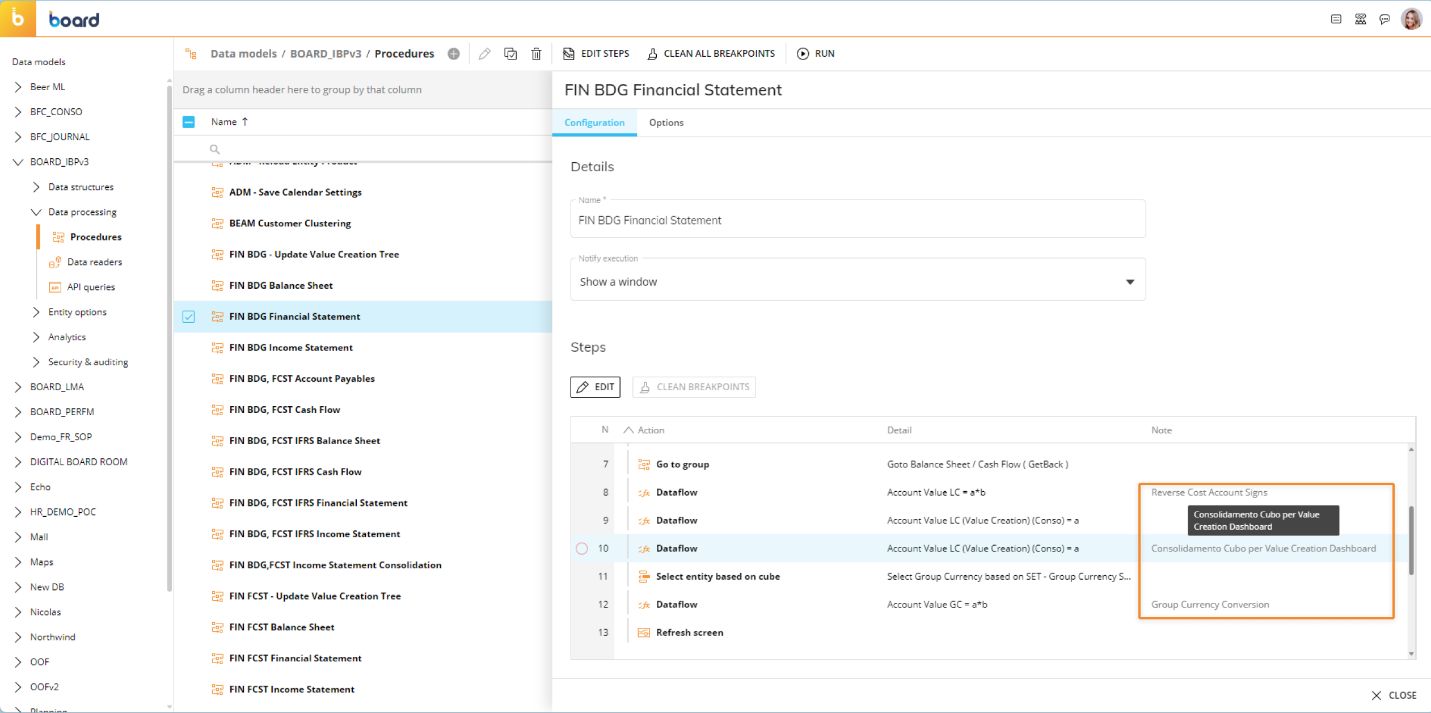
Click "DONE" to save and close the Procedure editor when you are done configuring your Procedure.
Open the "Options" tab to add any necessary Temporary Cubes. Click "+ CUBE" to create and dimension a temporary Cube, similar to creating a Cube.
Click "SAVE" to save the Procedure. Launch it by selecting the Procedure and pressing "RUN", located above the table.
What are Temporary Cubes?
Temporary Cubes are created and used as part of the Procedure in which they are defined, which means that they can only be used within the Procedure in which they are created and are not visible in the Cubes section of the Data model. Temporary Cubes are created when the execution of the Procedure starts and are deleted when the Procedure ends. By their nature, Temporary Cubes only occupy RAM during the execution of the Procedure and are never physically stored on disk.
Temporary Cubes can be used as standard Cubes in Dataflow calculations (as target or source of a Dataflow step) and are configured in the Procedure Properties panel under the "Options" tab. From here, click "+ CUBE", enter the Cube name, the data type, and its Structure (Dimensions). You can also copy an existing Cube and configure the Sparsity for its dimensions, as you would for a normal Cube. See Creating a Cube for more details.
Temporary Cubes can also be used in a Data reader.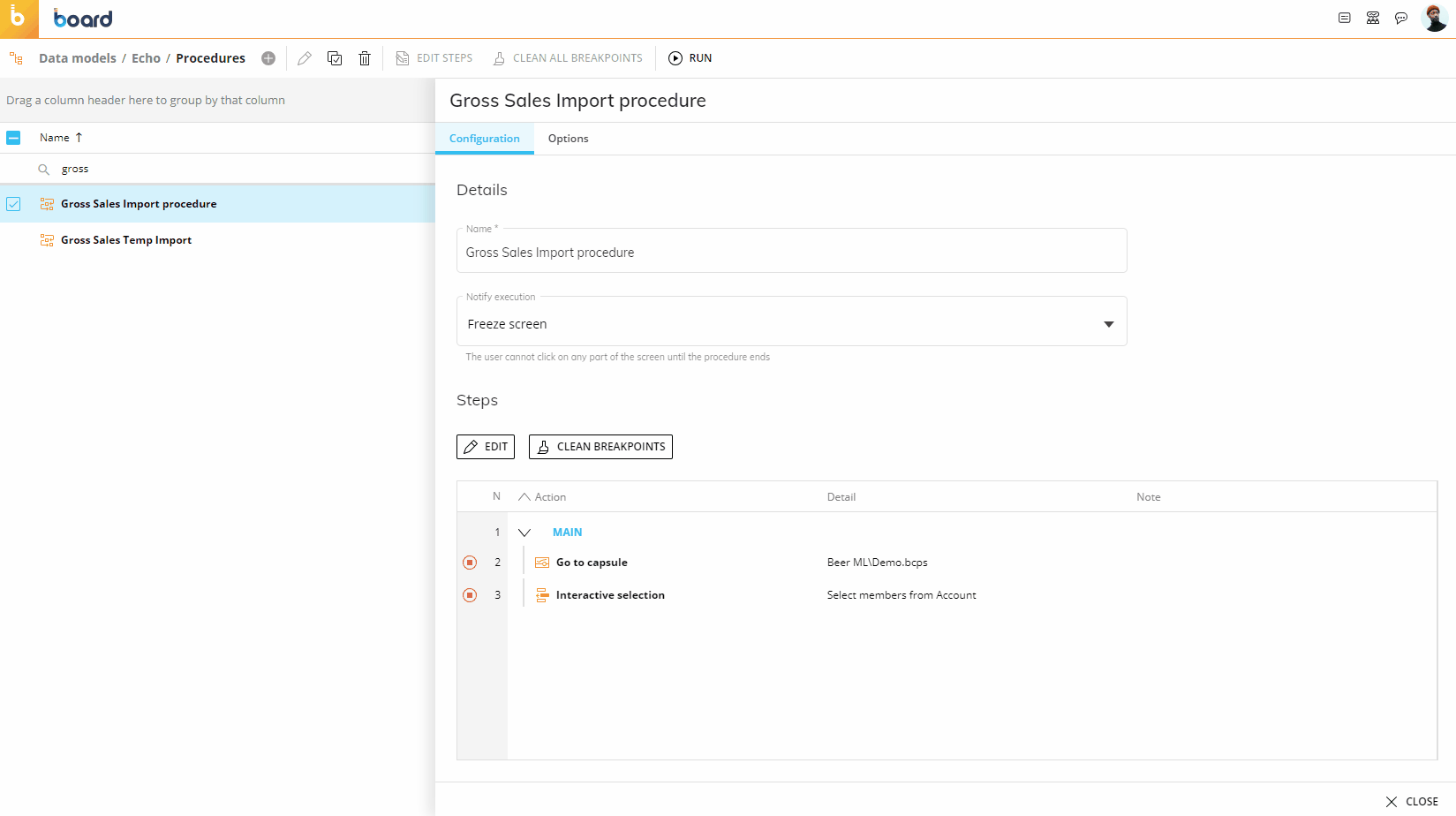
Every Procedure invocation allocates a different Temporary Cube, so two different users launching the same Procedure do not affect each other, but remain completely isolated.
In the Dataflow step, if a Temporary Cube used in the Layout is not found when the step is executed, the Dataflow will fail. This may happen, for example, when a Cube is configured in a Dataflow Layout and that same Cube is later deleted from the Procedure. In the Dataflow step, if a Temporary Cube configured in the "Limit calculation to tuples of the Cube" option is not found when the step is executed, the Procedure will fail and a specific error message will be displayed. This may happen, for example, when the Temporary Cube is configured in the "Limit calculation to tuples of the Cube" option and that same Cube is later deleted from the Procedure. In all steps affected by this implementation, if a Temporary Cube used in the Layout or in a Cube-based setting is not found when the step is executed, the Procedure will fail and a specific error message will be displayed. This may happen, for example, when a Cube is configured in a setting and that same Cube is later deleted from the Procedure In the "Export Data View to file" step, the Yearly Cumulated Value function is not supported when applied to a Temporary Cube in the Layout.
When a Temporary Cube holds data, it is treated as a regular Cube in terms of logging, selections based on Cube (and not Dynamic), and all other features available for regular Cubes. A Procedure where Temporary Cubes are configured as per the new implementation cannot be executed in previous versions of Board.
Temporary Cubes are not considered in the Impact Analysis section.
As a consequence of this new implementation, we have removed the Dataflow Analysis feature from the Dataflow configuration (the cog icon in the "CALCULATION DOMAIN" menu) and the "SCAN DATAFLOW ACTIONS" button in the OPTIONS tab in the Procedure configuration panel.
.svg)